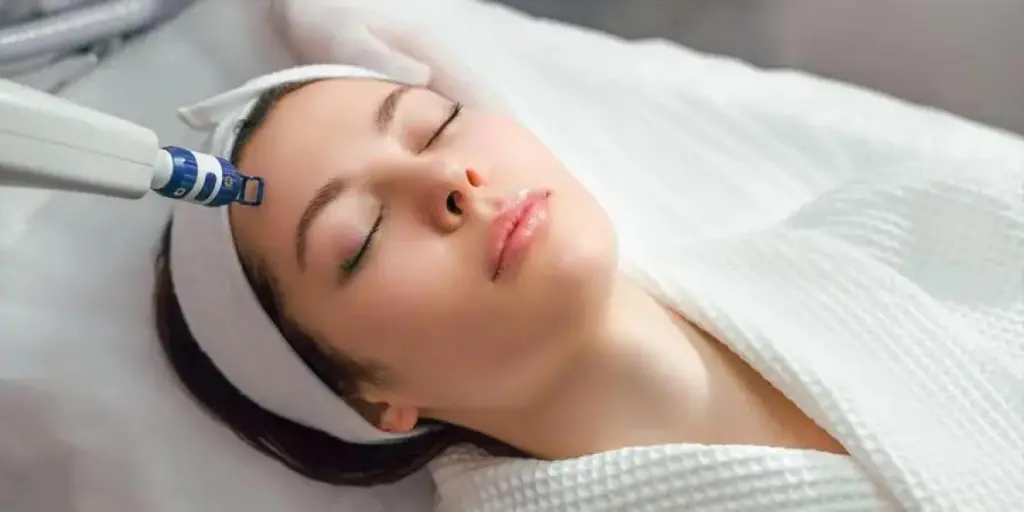If you are looking to source a cosmetic laser, there are many different types available in the market today. They use a range of technologies and wavelengths, and each type is effective for specific applications. So it might be difficult to know which is right for your business, and how to go about choosing the best one. This article will aim to answer these questions, so read on for a comprehensive guide to sourcing the right cosmetic laser for your needs.
Table of Contents
The projected growth of the cosmetic laser market
What to consider when selecting a cosmetic laser
Target market for different cosmetic laser machines
Summarizing the range of laser choices
The projected growth of the cosmetic laser market
The global cosmetic laser market has been growing rapidly over past years, reaching a global value of US $1.9 Billion in 2021. Because cosmetic lasers are a high-touch, close-proximity application, much of the cosmetic laser market stagnated during the pandemic outbreak. Now with the relaxing of safety measures demand is picking up again fast, and the global market is projected to grow at a compound annual growth rate (CAGR) of almost 13.7% to 2027 to around US $4.1 Billion.
What to consider when selecting a cosmetic laser
Cosmetic lasers are classified into the different types of lasers available in the aesthetics market. These can be summarized as Crystal lasers, CO₂ lasers, Diode, Pulsed Dye, and Intense Pulsed Light lasers. The laser light wavelength that each generates differs, and wavelength is an important factor for cosmetic application.
Different wavelengths target different skin properties, so different skin treatments can require different types of laser (or a laser that can operate at differing frequencies), and even removal of a tattoo of different colors may require lasering with different frequencies.
There are several different types of crystal lasers, Nd:YAG, Erbium, Ruby or Alexandrite, each delivering laser light in different frequencies. Crystal lasers produce a continuous laser beam, or can be either Pico-switched or Q-switched. Q-switching interrupts the continuous laser light into nano-second controllable pulses. Pico-switching is a newer technology and interrupts the beam 10x faster in pico-seconds.
Switched lasers are non-invasive and create a high-intensity pulsed beam that is very suitable for removing blemishes and tattoos. The pulses are able to break up and disperse the tiny fragments of pigmentation or ink. They can also stimulate collagen production, and are known for not damaging surrounding tissue and causing unwanted side effects.
Lasers can be ablative or non-ablative. Ablative lasers work by removing the top layers of the skin (the epidermis), whereas non-ablative lasers do not remove any skin. Ablative lasers would typically treat sun-damaged skin and scarring, early skin cancers, deep lines and wrinkles, and textural changes.
Nd:YAG lasers
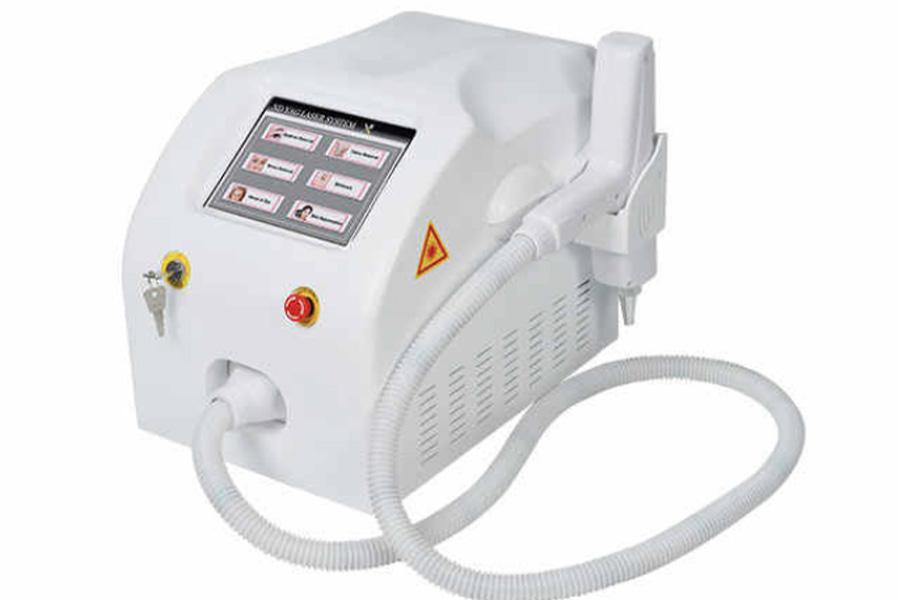
Nd:YAG lasers (neodymium-doped yttrium aluminum garnet) are powerful green light lasers with a wavelength of 1064nm. They are non-ablative deep tissue lasers and are very effective for permanent hair removal and vascular conditions.
Nd:YAG lasers also come in Pico and Q-Switched versions. They are used for skin rejuvenation, and treating pigment-related problems, such as moles, freckles, darkened scars, brown birthmarks and tattoos. Q-Switched lasers are most effective at removing tattoos with blue, black, and gray colors.
Erbium lasers
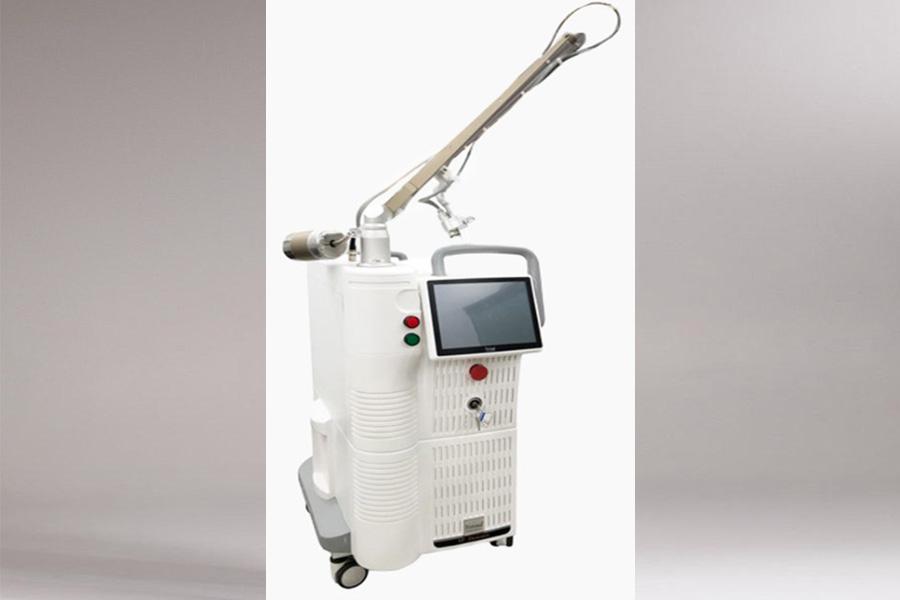
Erbium, or Er:YAG lasers (Erbium:yttrium aluminum garnet) are powerful ablative lasers and have a long wavelength of 2940nm in the infrared spectrum. They are typically used to remove damaged superficial skin. They can also penetrate deeply to stimulate collagen formation, so they are used for skin rejuvenation and resurfacing for wrinkles, scars and textural problems.
Ruby lasers
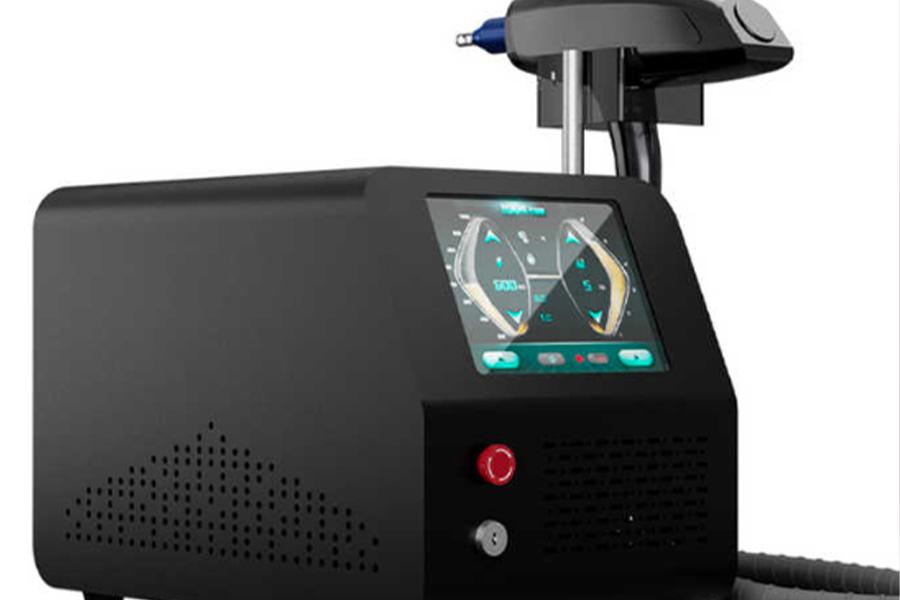
Ruby lasers use a red ruby crystal and generate a wavelength of 694nm. They are red light non-ablative lasers. They are most commonly used for hair reduction and to treat blue/black tattoos and pigmentation disorders.
Q-switched ruby lasers are effective for treating defined, benign, pigmented epidermal and dermal pigments.
Alexandrite lasers

Alexandrite lasers use an alexandrite crystal and produce a wavelength of 755nm. Like the Ruby lasers they are red light low-frequency lasers, but as the wavelength is slightly longer the laser light penetrates deeper into the skin where the hair follicles lay.
Alexandrite lasers are available in the Q-switched mode and are used for brown spots, sun spots, darkened scars, brown birthmarks, to remove black ink tattoos, and rare tattoo colors like lime green and sky blue.
CO₂ lasers
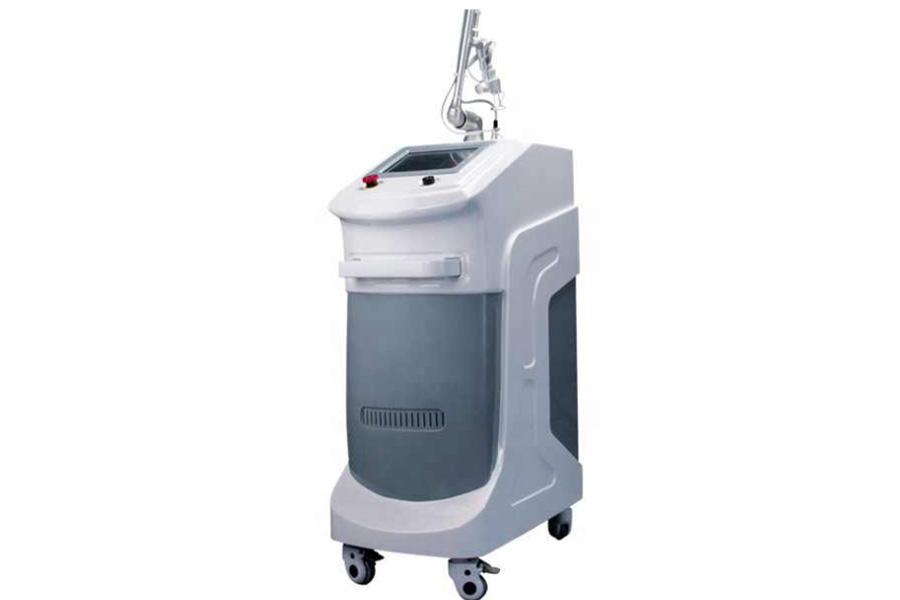
CO₂ lasers use CO₂ gas to produce the laser beam. These are powerful ablative lasers with a long infrared wavelength of 10600nm. They are used in many aspects of laser surgery, as well as deep laser resurfacing. CO₂ laser resurfacing has been used successfully for many years to treat wrinkles and scars as well as other benign skin growths and skin conditions.
The newer generation of fractional CO₂ laser split the laser light into short pulsed energy for cosmetic applications, such as deep collagen stimulation and superficial tightening and pigment reduction.
Diode lasers
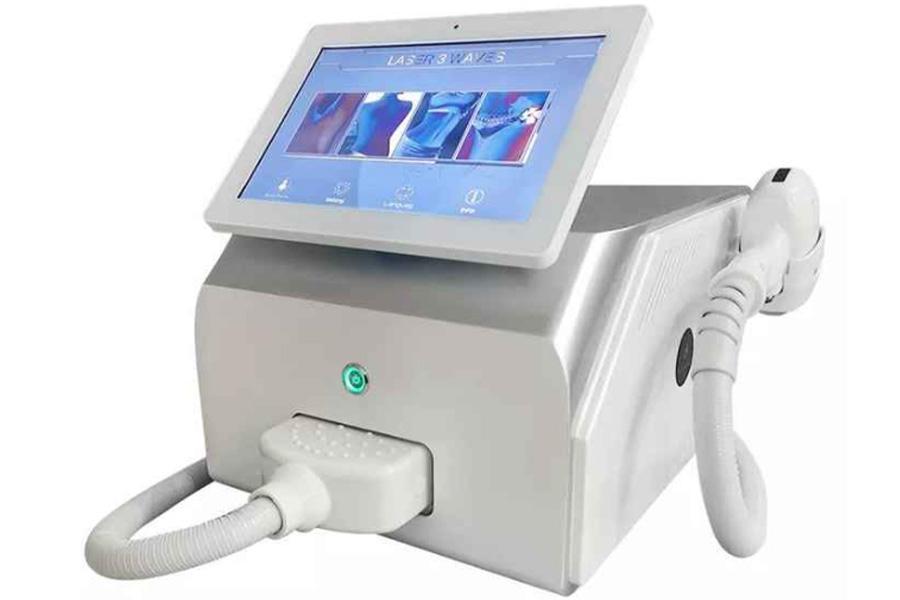
Diode lasers use a semiconductor device similar to a light-emitting diode (LED) to create the laser. Diode lasers have wavelengths in the near-infrared range, and produce light between 800 and 900nm. Diode lasers can penetrate deep into the hair follicle, so are used in hair reduction. Some diode lasers are also used at the longer wavelength of 1450nm which can be used to stimulate collagen as part of non-ablative skin rejuvenation.
Pulsed dye lasers
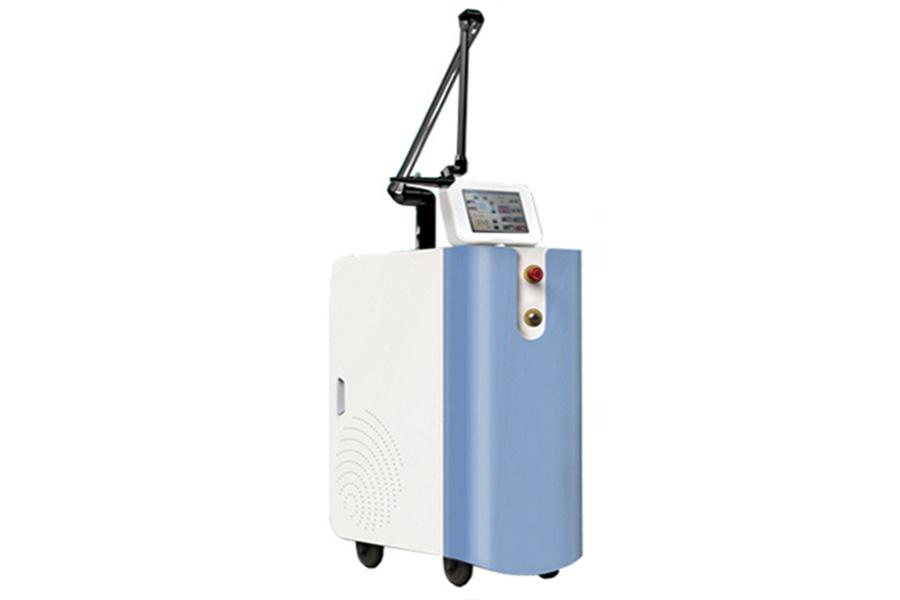
Pulsed dye lasers (PDL) produce yellow light at a wavelength of 585nm or 595nm. They use a concentrated beam of light to destroy blood vessels in the skin, while leaving the surrounding skin undamaged. Pulsed dye laser treatment can be effective for a variety of skin blemish conditions, including rosacea, facial redness, port wine stains, hemangiomas and hypertrophic scars.
IPL lasers
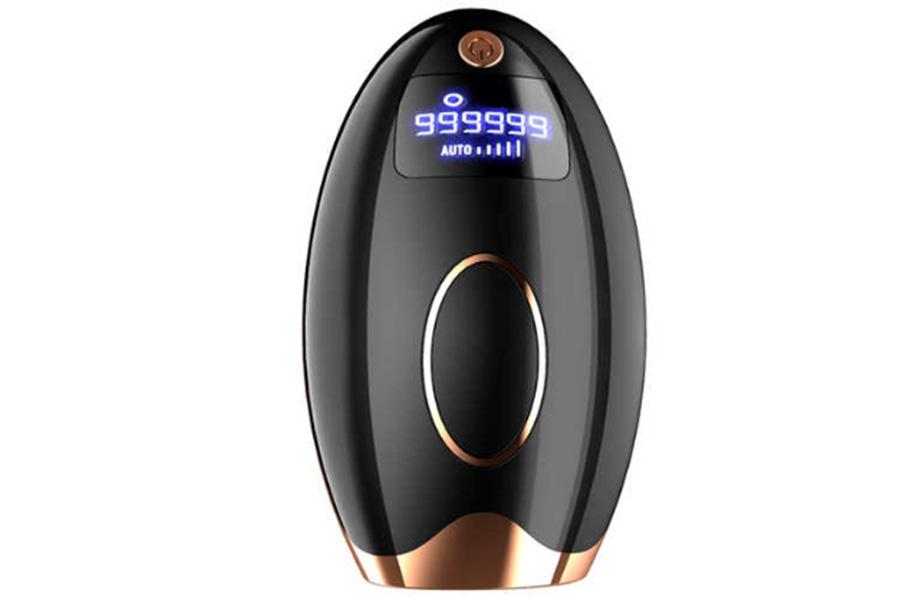
Intense pulsed light (IPL) lasers release a broad spectrum of light instead of a single wavelength, typically between 400nm to 1200nm in a single device. To achieve a focused wavelength, these systems have specialized filters to narrow the wavelength to accurately treat a skin condition.
As IPL systems can widen the target and offer different wavelengths, they have the advantage of being able to treat many pigment and hair conditions at once, including vascular conditions, wrinkles, scars and acne. However, there are varying qualities and sizes available in the market, from cheaper home use for hair removal, to more complex ones that need skilled operation to use correctly.
Target markets for different cosmetic laser treatments
Looking at market opportunities by application, the potential growth markets through to 2026 are in body contouring, hair removal, and skin resurfacing. The global hair removal market is projected to grow at a CAGR of 18.4% from 2022 to 2030, from a value of USD798.6 million in 2021.
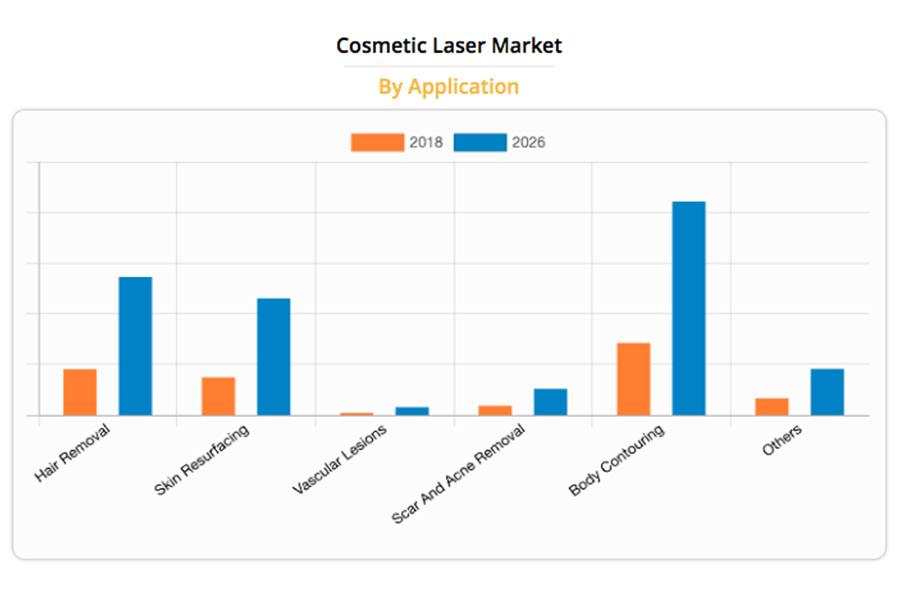
The US is expected to dominate the cosmetic laser market in the coming period, with the US Nd:YAG laser segment expected to grow at a CAGR of 18.6%. although Asia Pacific is expected to show the highest overall CAGR of 16.2% through to 2026.
Summarizing the range of laser choices
Having such a wide range of aesthetic laser machines available can present a confusing choice for a potential buyer. Each laser type has a specific wavelength range and has treatments that are best suited to that machine, although there are also machines that combine different types of laser into one. For example there are machines that combine Nd:YAG and ruby lasers, to offer dual treatments in both 1064nm and 532nm wavelengths.
Therefore in choosing a machine for your business, it makes sense to focus on the treatments that the business wishes to offer, and to then narrow down the options to the best machines for those treatments. Small handheld machines can be supplied ‘out of the box’, but specialist floor-standing or counter-top machines will need training and some level of support from the supplier.
Each machine has its merits and applications, and there is a wide choice of cosmetic machines available. Check out Alibaba.com to learn more and explore the most popular machines available on the market today.
